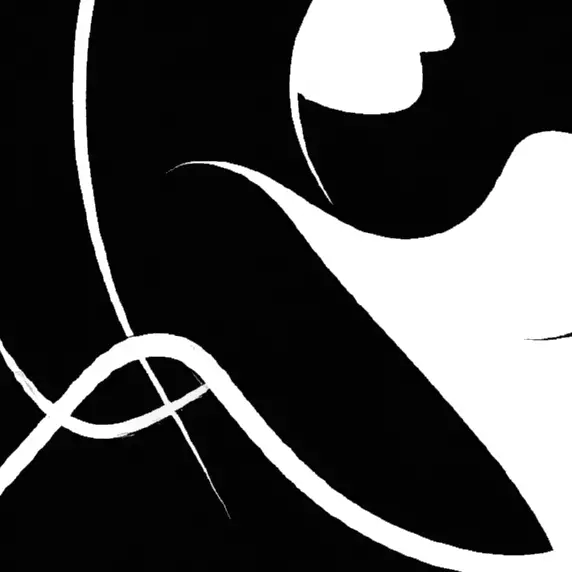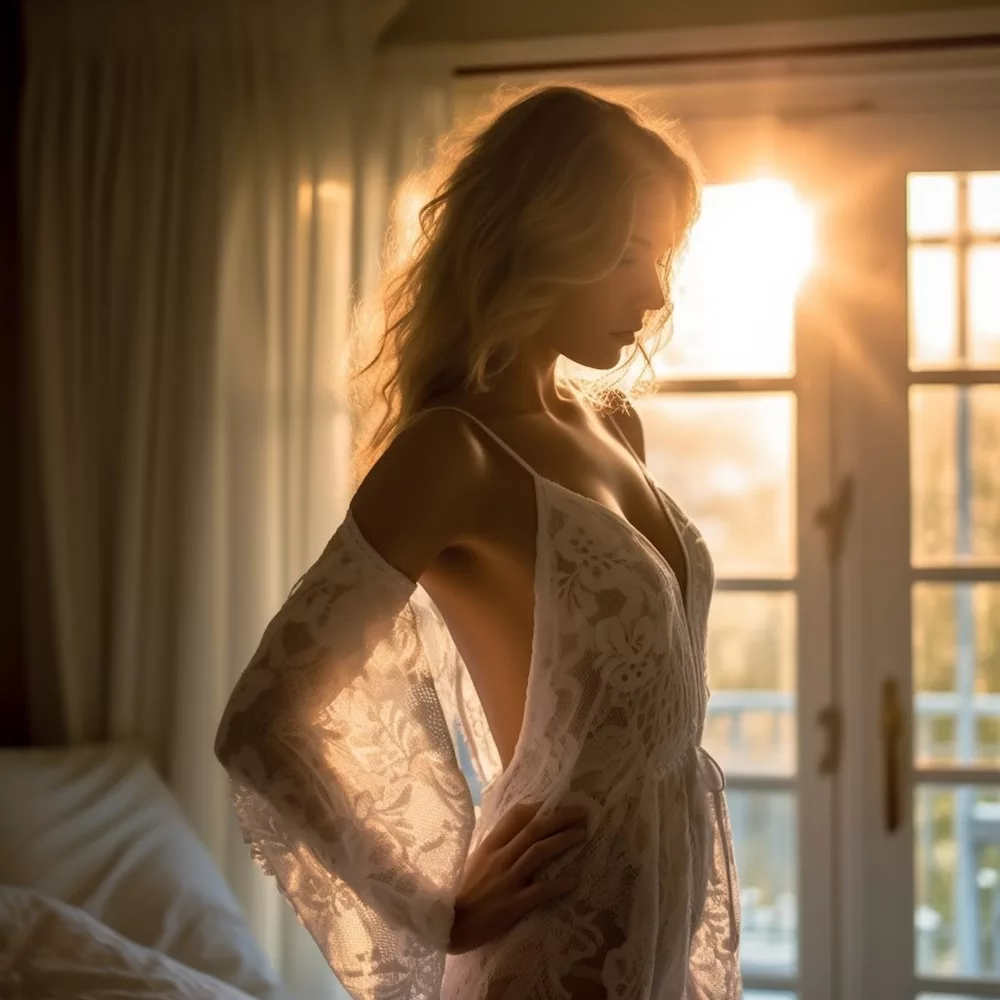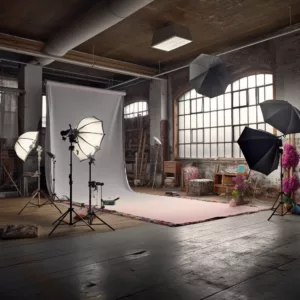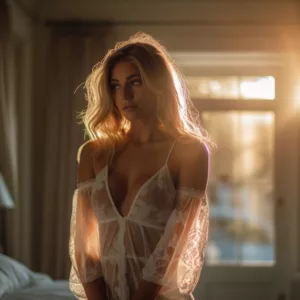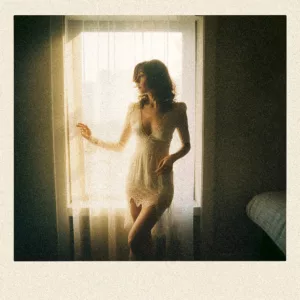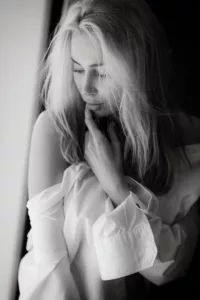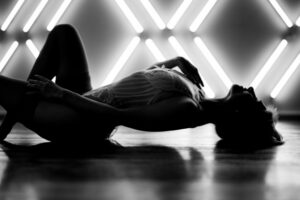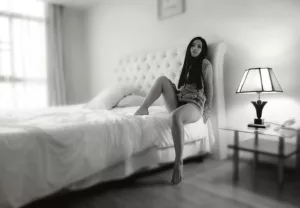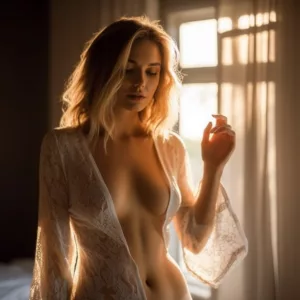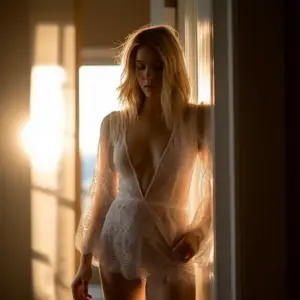I. Introduction
Ah, boudoir photography. It’s not just a trend; it’s an art form that’s stealing the limelight. Sexy, empowering, and downright intimate—this genre of photography is sizzling its way into the hearts of people everywhere. But let’s be real, it’s not all about lace and nudity. Nope, it’s a delicate blend of lighting, mood, and that magical connection between the lens and the subject. So whether you’re a newbie photographer or a confident poser, there’s a lot to unpack here.
- Key Elements for Stunning Boudoir Photos:
- Mood & Atmosphere
- Lighting
- Subject Comfort
II. Understanding Boudoir Photography
Ready for a quick history lesson? The term “boudoir” comes from the French word “bouder,” meaning to pout or sulk. Originally, it referred to a woman’s private sitting room. Fast forward to now, and it’s all about capturing intimate, sensual, or even erotic moments. But hold your horses, this isn’t a walk in the park. Boudoir photography demands a unique skill set—from making the subject comfortable to mastering the art of suggestive posing. And hey, it’s not just for the ladies anymore. Men, couples, and all kinds of relationships are jumping into the frame.
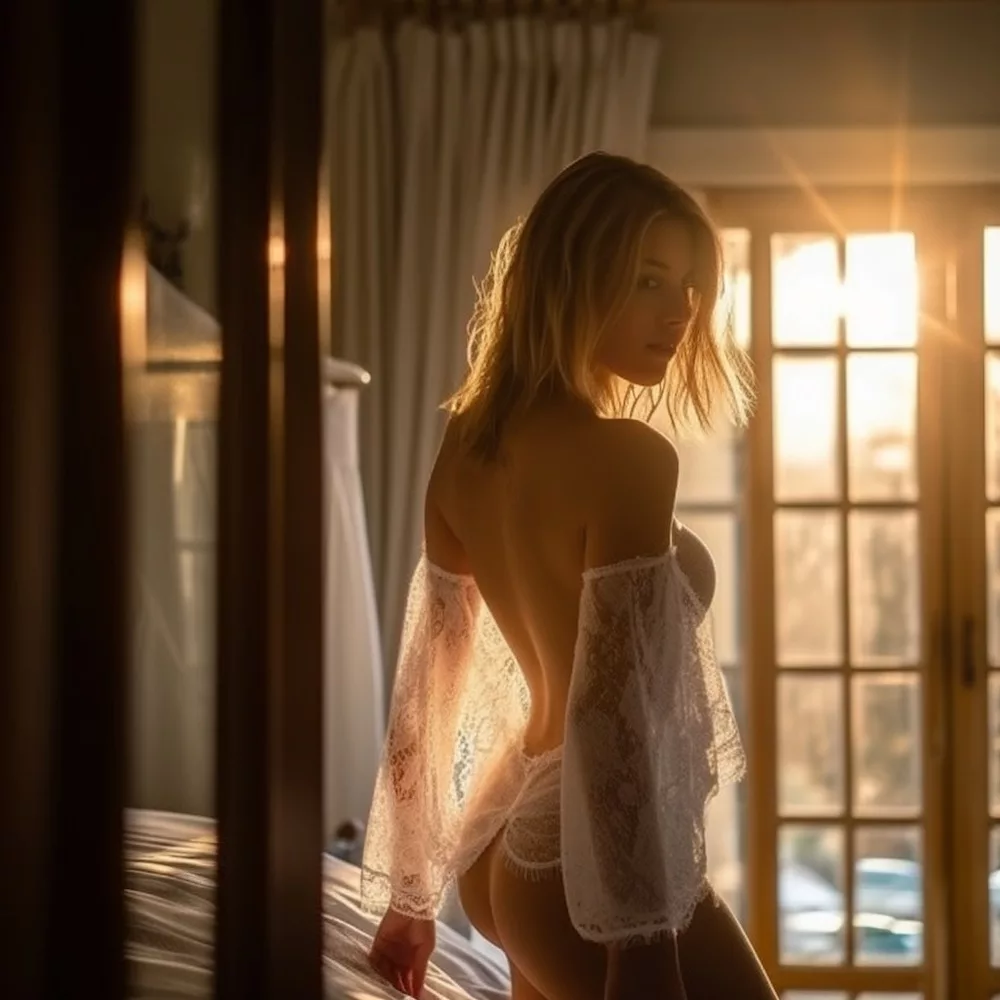
Challenges and Skills Needed:
| Challenge | Skill Required |
| Subject Comfort | People Skills |
| Posing | Creativity |
| Lighting | Technical Expertise |
III. Styles of Boudoir Photography
One style doesn’t fit all—boudoir photography is like a box of chocolates. You’ve got your classic sultry shots, the luminous ‘I woke up like this’ photos, and even the playful, ‘let’s throw a pillow fight’ moments. Your portfolio should be as diverse as a Broadway musical, offering something for everyone. Whether it’s a maternity boudoir shoot or dudeoir photos, the idea is to capture the essence of the person, not just their body.
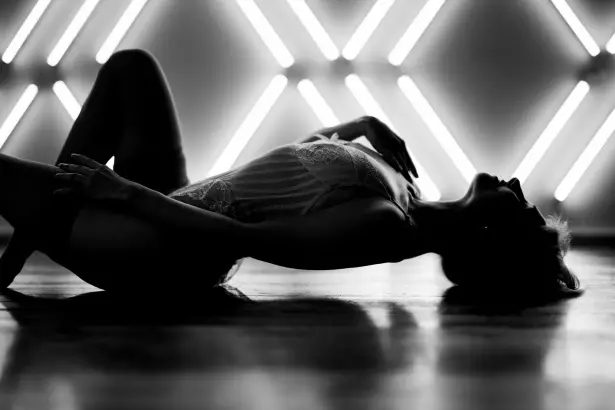
- Popular Styles of Boudoir Photography:
- Classic
- Luminous
- Playful
- Dark & Moody
- Pin-up
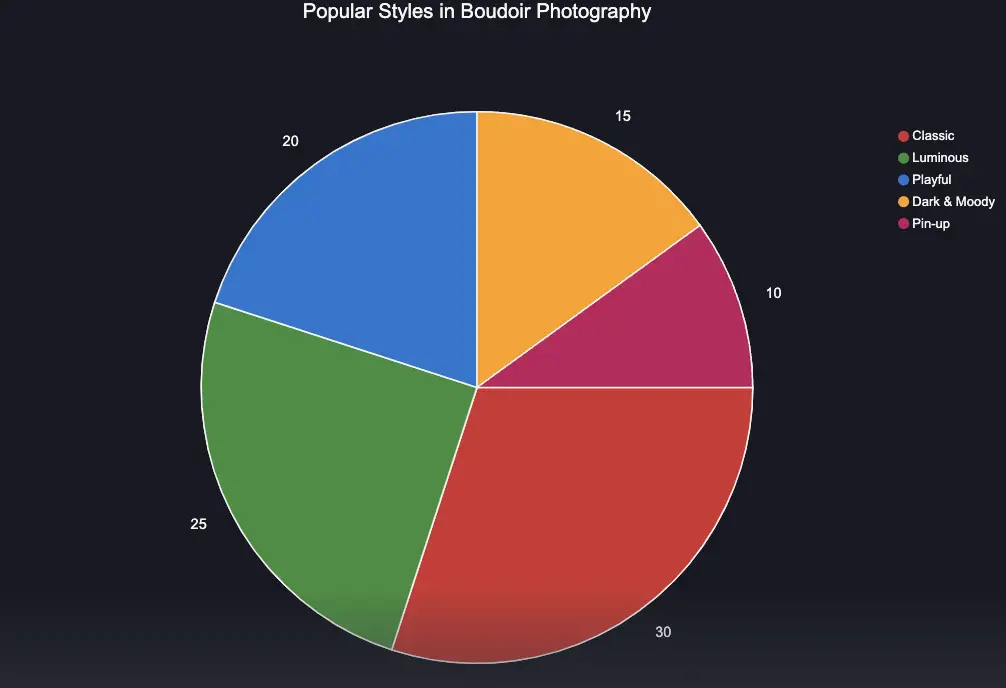
IV. Preparation for the Boudoir Photoshoot
Before you shout “lights, camera, action,” there’s homework to do. Preparation is your backstage pass to a killer boudoir shoot. It’s not just about the set or the costumes; it’s about the vibe. Trust me, the last thing you want is an awkward atmosphere. That’s why building a comfy client-photographer relationship is a must. You’re not just capturing images; you’re capturing emotions, remember?
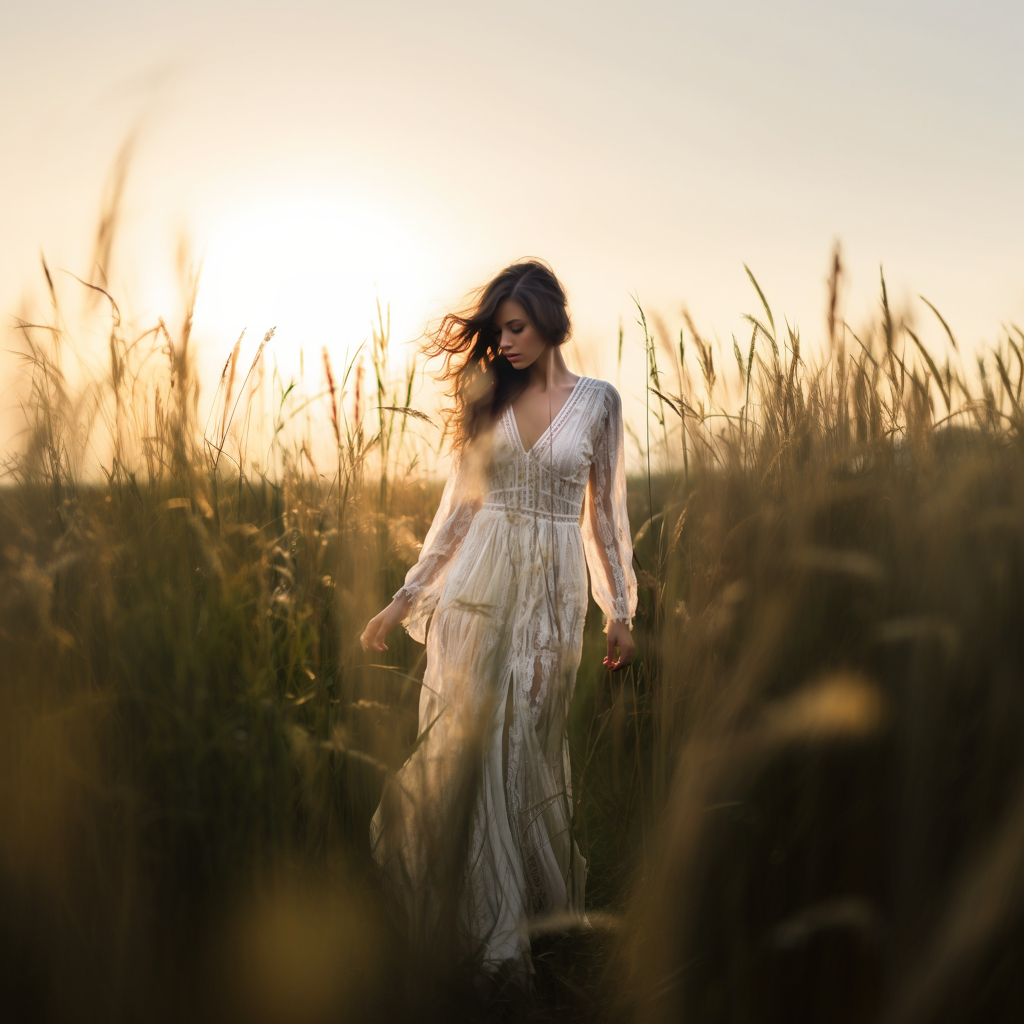
- Steps for a Successful Boudoir Shoot:
- Consultation
- Location Scouting
- Wardrobe Selection
- Pre-shoot Meeting
- Test Shots
V. Effective Communication
Ever tried solving a puzzle in the dark? That’s what a boudoir shoot is like without effective communication. The first rule of boudoir club? Talk. Get to know your client’s likes, dislikes, and what makes them tick. In-person consultations are gold—they build rapport and kick awkwardness out the door. Oh, and mood boards! These are the storyboards of boudoir photography. Share inspirations, color schemes, and even lighting moods for a smoother ride. For more on that, check out our guide on planning your shoot.
Communication Tools:
| Tool | Purpose |
| Consultation | Understand Client Preferences |
| In-Person Meet | Build trust and rapport |
| Mood Boards | Visualize Concepts |
VI. Makeup and Hair Styling for Boudoir Photos
Let’s get glammed up! Makeup and hairstyling are the unsung heroes of boudoir photography. They set the tone, highlight your best features, and can even define the style of the shoot. Are you going for a natural, luminous look or a sultry, smoky eye? Professional stylists aren’t just an option; they’re an investment in quality.
- Why Opt for Professional Styling:
- Expertise in makeup that complements photography.
- Hairstyling that lasts throughout the shoot.
- Coordination with the overall theme and concept.
So, whether it’s for wedding boudoir or lace boudoir, the right makeup and hair can make or break your session.
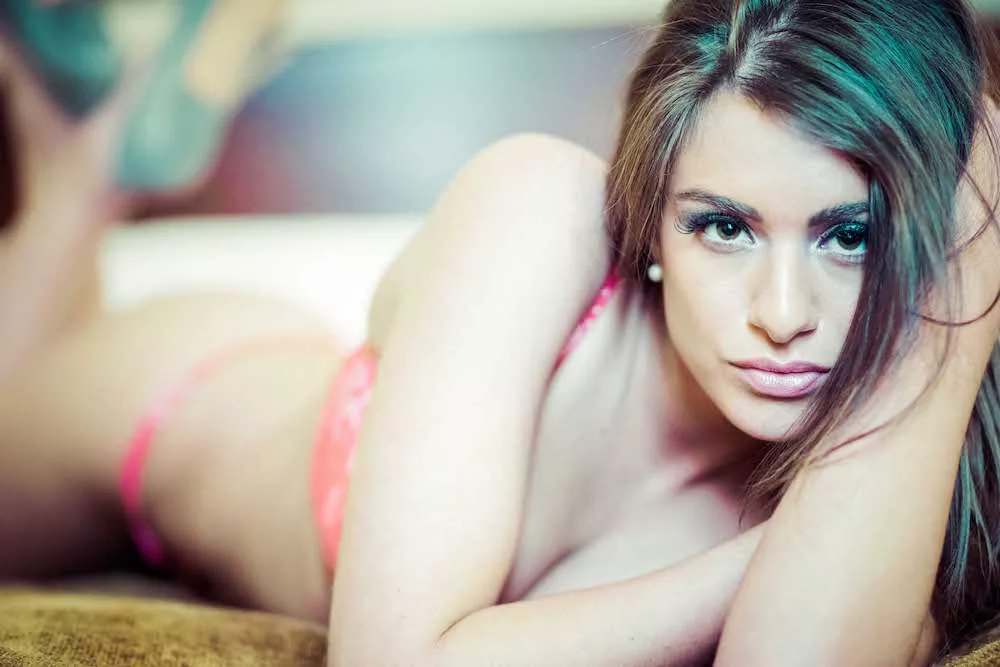
VII. Wardrobe Choices
Okay, fashionistas, this one’s for you. What you wear in a boudoir shoot is like the cherry on top of a sundae—it completes the whole experience. But don’t just throw on the first lacy thing you find. Whether it’s lingerie, a vintage pin-up outfit, or even tasteful nudes, your wardrobe should echo your personality and comfort level.
- Wardrobe Options to Consider:
- Lingerie Sets
- Casual Tees and Undies
- Pin-Up Attire
- Birthday Suit (Nudes)
For more wardrobe inspo, check out our complete guide on what to wear.
Boudoir Attire Recommendations
- Fair/Light Skin Tone: Soft pastels, navy, and jewel tones
- Medium Skin Tone: Earth tones, coral, and teal
- Olive/Dark Skin Tone: Metallics (gold, silver), berry shades, and deep blues
- Deep/Dark Skin Tone: Vibrant colors (crimson, cobalt), white, and muted tones like olive green
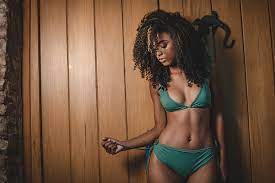
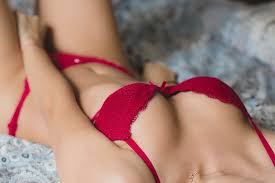
Makeup Color Recommendations
- Fair/Light Skin Tone: Soft pinks, browns, and golds
- Medium Skin Tone: Coral, bronze, and plum
- Olive/Dark Skin Tone: Berry shades, copper, and taupe
- Deep/Dark Skin Tone: Vibrant shades (crimson, electric blue), gold, and deep browns
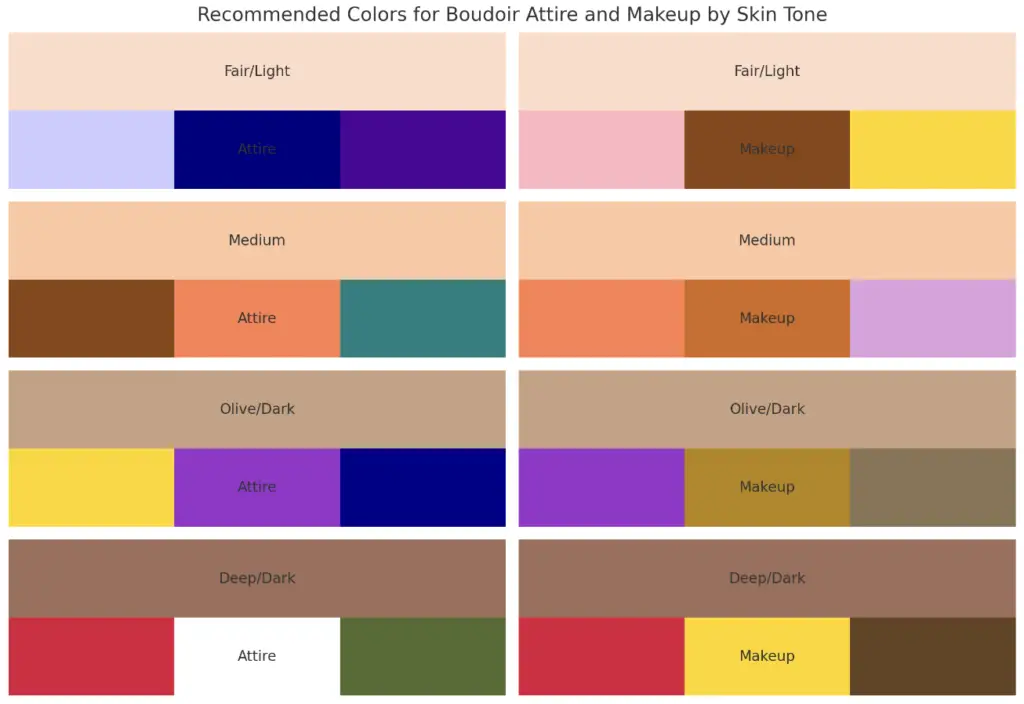
VIII. Equipment Selection
Alright, gearheads, listen up. Your camera is your magic wand, but the lens is where the real magic happens. Boudoir photography isn’t the place for bulky, cumbersome equipment. You want mobility, flexibility, and most importantly, quality.
Camera and Lens Recommendations:
| Type | Benefit |
| DSLR or Mirrorless | Versatility, ability to shoot lots of photos |
| Prine Lens | Sharp Images, Fast in low light |
| Zoom Lens | Framing Flexibility, Explore curves and more abstract shots |
TypeBenefitDSLRVersatility & QualityPrime LensSharp ImagesZoom LensFraming Flexibility
Ever heard of perspective control lenses? These bad boys let you get artsy and creative with focus. For the down-low on camera gear, cruise through our business guide.
IX. Lighting Considerations
Lighting in boudoir is like the soundtrack to a movie—it sets the mood. Natural light is your best friend; it’s flattering and easy to work with. But don’t shy away from artificial sources like softboxes or LED panels. They can add that extra oomph to your photos.
- Lighting Types and Their Uses:
- Natural Light – Soft and Romantic
- Softboxes – Controlled and Even
- LED Panels – Bright and Adjustable
Curious about how to blend natural and artificial light? We’ve got you covered in our boudoir photography section.
X. Boudoir Photography Ideas – Posing and Composition
Strike a pose! Now, let’s be honest—posing is the bread and butter of boudoir photography. It can make your subject look like a Greek deity or, well, a deer in headlights. But don’t fret; I’ve got some foolproof tips that’ll make anyone look like a natural.
- Five Essential Tips for Stunning Boudoir Poses:
- Create an Inspiration Board: Visual aids, people!
- Listen to Your Client: Their comfort is key.
- Plan the Poses: Improvisation is cool, but planning is cooler.
- Focus on Hand Positioning: Awkward hands, awkward photos.
- Less is More: Simplicity speaks volumes.
Need some pose inspiration? Our boudoir poses guide is a goldmine.
XI. Post-Processing
The shoot might be over, but the work isn’t. Say hello to post-processing, the digital makeup of your boudoir photos. We’re talking skin smoothing, blemish removal, and even some color correction. Most pros include this in their packages because, let’s face it, even the best shots can use a little polish.
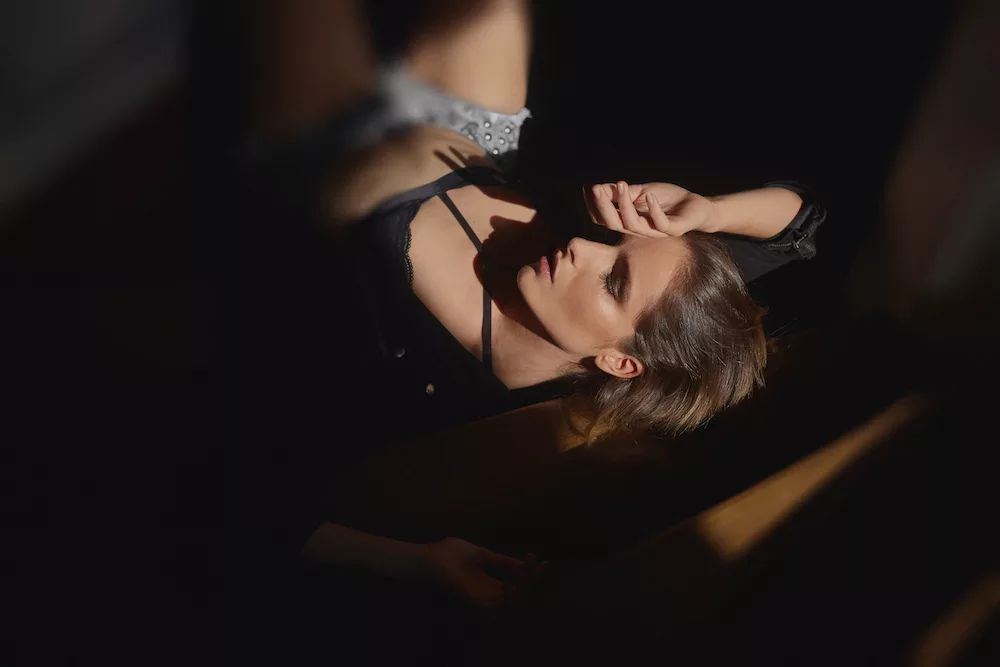
For those DIY enthusiasts, learn more about it in our DIY boudoir photography ideas section.
XII. Conclusion
Whew! That was a rollercoaster of lights, cameras, and a whole lot of action. Boudoir photography is an exhilarating blend of art, emotion, and technique. It comes with its hurdles, but boy, the rewards are picture-perfect (pun intended).
- Key Takeaways:
- Preparation and communication are king.
- Diverse styles cater to diverse clientele.
- The right equipment and lighting can make or break your shoot.
Ready to embark on your own boudoir journey? Trust me, it’s a trip worth taking.
XIII. Additional Resources
Hungry for more? Check out these must-reads and tools for diving deeper into the captivating world of boudoir photography.
